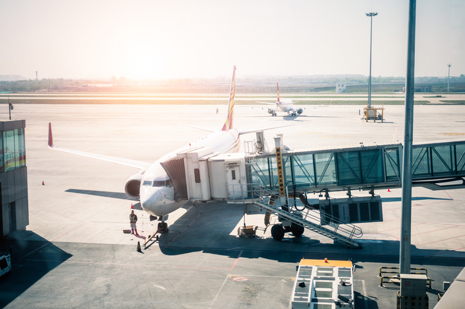
There have been a lot of discussion recently on the topic of slots in India. In response to queries received from the media, Philip Ireland, IATA's Manager, World Wide Airport Slots, spoke about some of the issues surrounding slots, how they are allocated, and the recommendations for slot management in India.
Q1. Should the Ministry of Civil Aviation (MOCA) re-write the slot allocation process for Indian airports?
Every journey, be it international or domestic, has an airport at both ends. Hence it is important that how slots are defined and allocated is standardized in order for global air transport to work efficiently.
Since 1974, the Worldwide Slot Guidelines (WSG) has been the standard for slot allocation. Work is being done to improve the WSG with airports and airlines, and coordinators working together through a Strategic Review. Today nearly half of all passengers worldwide travel through a slot coordinated airport.
Deviating from the WSG will make airlines operations in India more complicated than it should be and do more harm than good to the potential of Indian aviation and Vision 2040.
Q2. Is slot capping for an airline at an airport effective?
We do not think capping slots is a good idea. It can lead to unintended consequences – dampening competition, reducing connectivity, and uncertainty of airline operations.
Our experience globally has shown that competition can continue to grow at congested airports as long as the WSG is applied consistently.
An artificial cap on slots at an airport brings uncertainty to an airline’s future growth plans and disincentivizes an airline to grow its operations and invest in future consumer benefits. This may result in less competition, less connectivity and hurt the hub potential of the airport.
The WSG is able to facilitate a competitive slot allocation. 50% of capacity in the slot-pool is made available to new entrants, while the opportunity remains for incumbent airlines to develop services and create competition too.
Q3. Can mid-season reallocation of slots address the slot constraints at airports?
Airlines plan and sell seats on their flights in advance. Trying to reallocate slots midway through a season would probably be too late to enable airlines to publish services and for airports to resource according to expected demand.
Slot changes, slot swaps, slot transfers and reallocations between airlines are already taking place as the planning process and season develops following the allocation of the slots. It is an ongoing process slot coordinators, airlines and airports are familiar with.
We recommend a more fluid and ongoing process to ensure best information for all parties is made available as early as possible. There is no need for a formal reallocation date, as this process is continual already.
Q4. Would slot auctioning work?
No! The sale of slots through auctions is not supported. This leads to uncertainty in an airline’s operations, which negatively impacts the ability of both airports and airlines to invest in future services and infrastructure. It would harm established networks and future connectivity, will compromise competition and create perverse incentives to a process that is fair, neutral and non-discriminatory today. Disabling entry for many carriers, who today are able to access congested infrastructure – this only serves to undermine competitiveness of Indian aviation.
Q5. Would slot trading work?
Slot trading is rare and has only taken place at a handful of airports, such as London Heathrow and New York JFK. It is important to note that the value associated with slot trading is the result of scarce airport capacity. In our experience, if there is availability at an airport, airlines will choose the time-available, rather than pay for slots.
It is globally recognized that while an airline utilizes slots in accordance with the 80:20 use-it-or-lose-it rule, the airline has earned the rights to utilize the same slots in the future equivalent season. These principles concerning historic precedence provide the industry and the consumer with the certainty of operations in future seasons.
Q6. Do you have any recommendations for the government as it moves to address the slot allocation process in India?
We have 2 recommendations.
The first is transparency. MOCA should mandate declaring of available capacity through the NAC charts for all airports, in a transparent and timely manner and in consultation with the airline users.
Secondly, there should be a single, centralized and independent airport slot coordinator for India. From a single slot-coordinator a decade back, we now have separate slot coordinators for each of the private airports. This leads to a multiplicity of coordinators, different practices and interpretation of standards around slots in India.
We strongly urge for a single-independent slot-coordinator for India.
Q7. The government plans to regulate and prescribe specific block times for flights. Would that work?
We are not clear what the proposal is regarding dynamic block times. However, the consideration of block times is both an operational and commercial consideration for an airline to make, which can also impinge on aviation safety. Third parties are not well placed to advise airlines how they are required to fly. Operational issues like the change of winds between summer and winter schedule for example is something that regulation neither airlines can control.
Q8. Could slot capacity be increased through prescribing a shorter 2-minute interval for slot allocations in India?
Even though slot allocations are generally made in 5-minute intervals, multiple movements are allocated within each 5-minutes. This is a standard global practice.
Allocating slots in intervals of less than 5-minutes is unlikely to translate into any measurable benefit or increase the number of slots. It is too defined to result in any operational efficiencies. Airports are subject to different types of demand and operational factors; and it is not efficient to assume only one movement may take place each 1 or 2 minutes.